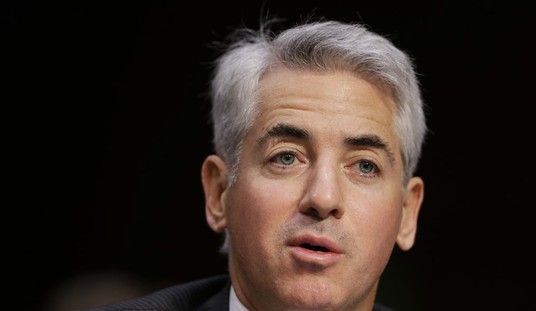On October 31, we celebrate Reformation Day, but before Martin Luther nailed the 95 theses to that famous church door in Wittenberg, two lesser-known but extremely vital reformers paved the way. And they lived in the worst of times.
You think times are rough now? Well, they certainly are, but they were much worse back in the fourteenth century (as in the days of William Wallace of “Braveheart” fame). Can you imagine facing these problems? I know I’m simplifying these events, but just take a look at all these “good times” happening in that century, and how two men of those days dealt with it all:
1. The “Great Famine.”
This famine lasted from 1314-17 in northern Europe. It was the first of several famines that kept reoccurring throughout the fourteenth century. Europe had been enjoying what is now called the “Medieval Warm Period” (from the 10th century to the beginning of the fourteenth century).
Then eeeeeevil “climate change” occurred (probably due to all the carbon belching factories and all the SUVs and Harleys the knights were driving around) and Europe began to experience a “Little Ice Age” (lasting from the 14th century to the middle of the 19th century). The foul weather (incredibly cold winters and cool summers) put a real dent in food production. This Great Famine, along with subsequent famines, killed millions all over Europe.
2. The “Black Death.”
And then there was the “Mother of All Pestilences” — the Bubonic Plague. This plague (known as the “Black Death”) invaded Europe in 1346. This first wave of the plague lasted until 1353, but continued to make comebacks in Europe and the Middle East for the next 400 years. In the 14th century, it killed an estimated 50 million people, possibly 60 percent of Europe’s population.
Just imagine if such a thing happened today! In many places entire villages were wiped out. There was no one to even bury the dead! There simply was no known defense against this disease. Coupled with the famines, Europe soon became severely depopulated.
3. The Hundred Years’ War.
Oh yeah, I almost forgot that the English and French (and their many allies) were duking it out for over 100 years (1337-1453). Although the war did not have 100 years of continuous battles, the two kingdoms were definitely shedding blood for control of France for many years. France eventually won, England gave up its claims, and everyone sighed with relief that the war was over, until the next one started.
Next Page: A corrupt church and Jihadists at the gates.
4. The Great Papal Schism.
In short, this was a huge fight within the Roman Catholic Church over control of the papacy. The popes had been living in Avignon, France for almost 70 years. However, a new pope, Gregory XI brought the papacy back to Rome. He died in 1378, and a huge dispute arose over the next pope.
An Italian, Urban VI, was chosen. But because Urban VI was seen as rather violent and “off his rocker,” other cardinals chose another pope: Clement VII. Clement went back to Avignon while Urban stayed in Rome. Two popes claimed the same authority, the same allegiance, at the same time. Eventually there would be three people simultaneously claiming to be pope.
Pretty confusing and frightening for most of Europe which believed that the pope spoke for God in all matters of faith and practice. This furor continued throughout the rest of the century until the Council of Constance straightened it out and arrived at proclaiming a new pope (Martin V) to lead the unified Roman Catholic Church.
5. The Turks.
Last but certainly not least, the Islamic Turks were invading Europe and crushing pretty much everyone under the boots of their war machine. The knights in Spain were fairly successful at this time in driving the Muslims out of Spain (not completed until 1492), but in the southeastern corner of Europe the Turks were on the rampage.
The Byzantine Empire (the last vestige of the ancient Roman Empire) was helpless to stop them. The Turks had conquered all of Anatolia (the present day Republic of Turkey) and were already surrounding Constantinople on all sides. No European army could stop them. In 1453, they would conquer Constantinople and roll right up to the front door of Vienna, Austria!
So there you have it. You are surrounded by famines, plagues, corrupt governments, corrupt religious institutions, and an “invincible” enemy at the gates. “Western Civilization” is confined to just one little corner of the world. What do you do? Curl up in a ball, suck your thumb, and wait for the end to come? Well, some people will do that I suppose. But let me tell you about two men who refused to cave in to all the bad news all around them. Instead of cursing the darkness they brought forth candles and greatly influenced their world and generations to come:
Next Page: The most important pre-Reformation figure you’ve never heard of.
1. Geert Groote (1340-1384).
This Dutchman lived a pretty debauched life until experiencing a conversion in 1374. He immediately wanted to live as Christ did and gave away all his worldly possessions. He stayed in a Carthusian monastery for a few years until deciding it was his goal in life to preach the Gospel and teach other laymen to do so.
He became a deacon, received permission to preach through the blessing of the Bishop of Utrecht, and began speaking out against the corruption of the Church. He preached against priests having concubines (a common problem), avarice, and the selling of church offices. His preaching was so popular that the churches could not contain the crowds that would come to hear him.
Groote also established a community of laymen called “The Brethren of the Common Life.” These men did not take monastic vows, they could leave and marry whenever they wanted to. (Groote also established “The Sisters of the Common Life” with women who wanted to be a part of the movement.) They were laymen, not clergy. They believed their duty was to help the poor and educate people through teaching, preaching, and copying the Bible and the classics (both Christian and pagan). Groote himself began to translate the Bible into the common language of the people, but died from the Bubonic Plague before he could finish.
Their schools were noted for academic excellence, teaching rhetoric, philosophy, mathematics, astronomy, and theology. Several famous students attended these schools over the centuries: Thomas à Kempis (author of the Christian classic The Imitation of Christ), Nicholas of Cusa (famous Catholic cardinal who was also an astronomer, jurist, philosopher and theologian), Erasmus (noted Catholic scholar, author, and THE “Christian humanist” of the 16th century), and Martin Luther (famous or infamous leader of the Protestant Reformation).
Their communities contributed greatly to the climbing high rate of literacy in Europe, the use of the laity in church missions, and to the much later Protestant Reformation.
Next Page: John Wycliffe.
2. John Wycliffe (c.1329-1384).
Wycliffe was a Roman Catholic priest, philosopher and professor at Oxford. Through his study of the Bible, he believed that the Church he saw around himself had strayed drastically (both doctrinally and morally) from the Church he saw in the New Testament.
Supported and protected by a nobleman, John of Gaunt, Wycliffe consistently spoke out against the corruption of the Church. He wrote about his objection to the entire sacramental system of Catholicism, denying the central doctrine of transubstantiation (the belief that the wafer and wine during communion literally become the body and blood of Jesus).
As Wycliffe read the New Testament he became more convinced that the papacy could not be supported by the Bible, that the people did not need a separate priesthood to bring them to God, and he believed that one was saved by grace alone wholly apart from any rituals or ceremonies of any Church.
Wycliffe also wanted the entire Bible translated into English so that commoners could enjoy the Word of God in their own language. Of course, many in the Church saw this as a threat. Wycliffe certainly was not very popular (neither were his followers, known as “Lollards”), but because of his protection from John of Gaunt he was spared execution. He died peacefully in his sleep in 1384.
But the man’s ideas lived on long after him. The Bohemian reformer John Huss took up Wycliff’s ideas and proclaimed his message through his homeland. (Unfortunately he was burned at the stake at the Council of Constance in 1415). Almost 100 years later, Martin Luther, heavily influenced by both Groote and Wycliffe, nailed a protest to a church door in Wittenburg and unknowingly began the Protestant Reformation.
You never know what can be done when you refuse to give in, stop worrying, and just start being productive!









Join the conversation as a VIP Member